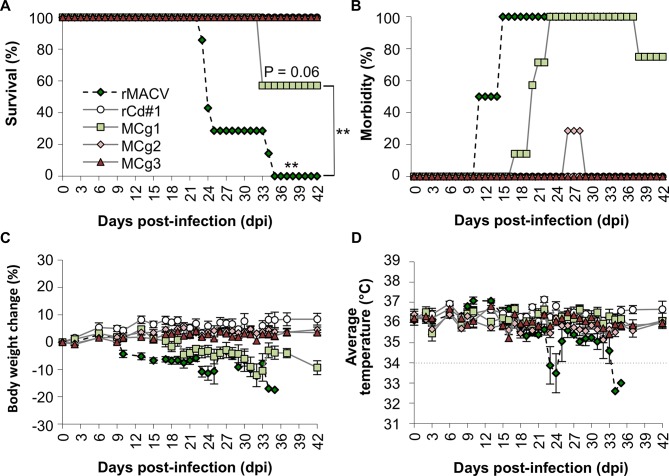Fig 2. IFN-αβ/γ R-/- mice were infected with 10,000 PFU of rMACV, rCd#1, MCg1, MCg2 and MCg3 by the intraperitoneal route.
(A) Survival rate of the IFN-αβ/γ R-/- mice after rMACV, rCd#1, MCg1, MCg2 and MCg3 infections (N = 7 per group except rCd#1, for which N = 6). Statistically significant differences between rMACV- and MCg3-infected groups are indicated by asterisks (**, P<0.01 by log rank test). The survival rate of the MCg1-infected group was significantly increased (**, P<0.01 for rMACV-infected group versus the MCg1-infected group). No significant difference was observed between MCg1- and MCg3-infectred groups (P = 0.06). (B) Clinical symptoms were monitored daily. All rMACV-infected animals showed disease such as scruffy coats and hunched postures at 11 to 15 dpi, while MCg1-infected animals showed delayed onset of the symptoms by 2–12 days. Two of mice infected MCg2 showed mild scruffy coats at 26 dpi to 28 dpi. (C) Body weight changes were monitored on the indicated days. Error bars indicate the SEM (N = 7 per group except rCd#1, for which N = 6). Loss of 5% of body weight in MCg1-infected mice was delayed by 6 to 13 days than in rMACV group. (D) Body temperatures were monitored on the indicated days. While six of seven rMACV-infected animals showed hypothermia (below 34°C) at 1 to 3 days prior to death, no exhibited hypothermia in groups of rCd#1-, MCg1-, MCg2- and MCg3-infected animals. The dots line indicates 34°C. The rMACV and rCd#1 were inoculated into IFN-αβ/γ R-/- mice as a positive control and negative control, respectively, at the same time with MCg1, MCg2 and MCg3. The data of rMACV and rCd#1 in the Fig 2A, 2C and 2D has been published in Fig 2A, 2B and 2C respectively, of [16].

